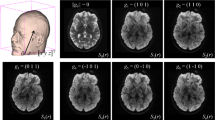Abstract
With the application in many neuroimaging studies, diffusion tensor image (DTI) registration has generated considerable interest and been studied widely. Although a number of DTI registration methods have been developed, their performances have not yet been compared systematically. This work addresses this gap by comparing a large number of existing DTI registration methods and gives the comprehensive evaluation results. In this paper, the open-access IXI DTI dataset were used. In order to compare the accuracy of tensor matching, 11 open-source registration methods were evaluated with 7 quantitative and open-access evaluation criteria that measure the similarity among tensors (namely tensor-based techniques) or scalar images derived from diffusion tensors (namely scalar-based techniques). The evaluation results indicate that the diffeomorphic deformable tensor registration method (referred to as DTI-TK) is the best method, followed by the symmetric image normalization method (referred to as SyN).







Similar content being viewed by others
References
Adluru N, Zhang H et al (2012) A diffusion tensor brain template for Rhesus Macaques[J]. NeuroImage 59(1):306–318
Alexander DC, Gee JC (2000) Elastic matching of diffusion tensor images. J Comput Vis Image Underst 77(2):233–250
Andersson JLR, Jenkinson M et al (2007) Non-linear registration, aka Spatial normalisation FMRIB technical report TR07JA2[J]. FMRIB Analysis Group of the University of Oxford, Oxford
Arsigny V, Fillard P et al (2005) Fast and simple calculus on tensors in the Log-Euclidean framework[C]. Proceedings of MICCAI, Springer, pp 115–122
Arsigny V, Fillard P et al (2006) Log-Euclidean metrics for fast and simple calculus on diffusion tensors[J]. Magn Reson Med 56:411–421
Ashburner J, Friston KJ (2007) Rigid body registration[J]. Statistical parametric mapping: the analysis of functional brain images 49–62
Avants BB, Epstein CL et al (2008) Symmetric diffeomorphic image registration with cross-correlation: evaluating automated labeling of elderly and neurodegenerative brain[J]. Med Image Anal 12(1):26–41
Basser PJ, Mattiello J et al (1994) Estimation of the effective self-diffusion tensor from the NMR spin echo[J]. J Magn Reson B 103(3):247–254
Basser PJ, Pajevic S (2000) Statistical artifacts in diffusion tensor MRI (DT‐MRI) caused by background noise[J]. Magn Reson Med 44(1):41–50
Cao Y, Miller MI et al (2005) Large deformation diffeomorphic metric mapping of vector fields[J]. IEEE Trans Med Imaging 24(9):1216–1230
de Groot M, Vernooij MW, Klein S et al (2013) Improving alignment in Tract-based spatial statistics: evaluation and optimization of image registration[J]. NeuroImage 76:400–411
Hecke V, Leemans A et al (2007) Nonrigidcoregistration of diffusion tensor images using a viscous fluid model and mutual information[J]. IEEE Trans Med Imaging 26(11):1598–1612
Hu YX (2012) Research on multimodality medical image non-rigid registration based on mutual information[D]. Central South University, Changsha (Chinese version)
Jones DK, Griffin LD et al (2002) Spatial normalization and averaging of diffusion tensor MRI data sets[J]. NeuroImage 17(2):592–617
Joshi S, Davis B et al (2004) Unbiased diffeomorphic atlas construction for computational anatomy[J]. NeuroImage 23(1):S151–S160
Keihaninejad S, Zhang H et al (2013) An unbiased longitudinal analysis framework for tracking white matter changes using diffusion tensor imaging with application to Alzheimer’s disease[J]. NeuroImage 72:153–163
Klein A, Andersson J et al (2009) Evaluation of 14 nonlinear deformation algorithms applied to human brain MRI registration[J]. Neuroimage 46(3):786–802
Mattes D, Haynor DR, Vesselle H et al (2003) PET-CT image registration in the chest using free-form deformations[J]. IEEE Trans Med Imaging 22(1):120–128
Mayer A, Greenspan H (2007) Direct registration of white matter tractographies and application to atlas construction[C]. Proc. of workshop on statistical registration: pair-wise and group-wise alignment and atlas formation
Miller P, Coope D, Thompson G et al (2012) Quantitative evaluation of white matter tract DTI parameter changes in gliomas using nonlinear registration[J]. Neuroimage 60(4):2309–2315
Ourselin S, Roche A, Prima S et al (2000) Block matching: a general framework to improve robustness of rigid registration of medical images[C], Medical Image Computing and Computer-Assisted Intervention–MICCAI. Springer, Berlin, pp 557–566
Schnable JA, Reuckert D, Quist M et al (2001) A generic framework for non-rigid registration based on non-uniform multi-level free-form deformations [C]. Med Image Comput Comput Assist Interv 573–581
Shadmi R, Mayer A et al (2010) Piecewise smooth affine registration of point-sets with application to DT-MRI brain fiber-data[C]. Biomedical Imaging: From Nano to Macro, IEEE International Symposium 528–531
Song ZL (2010) Research on image registration algorithm and its applications[D]. Fudan University, Yangpu (Chinese version)
Studholme C, Hill DLG et al (1999) An overlap invariant entropy measure of 3D medical image alignment[J]. Pattern Recogn 32(1):71–86
Sweet A, Pennec X (2010) Log-domain diffeomorphic registration of diffusion tensor images[M], vol 6204, Biomedical Image Registration. Springer, Berlin, pp 198–209
Vercauterena T, Pennecb X et al (2009) Diffeomorphic demons: efficient non-parametric image registration[J]. NeuroImage 45((1 Suppl)):S61–S72
Wang Y, Chen Z, Nie S et al (2013) Diffusion tensor image registration using polynomial expansion[J]. Phys Med Biol 58(17):6029
Wang Y, Gupta A et al (2011) DTI registration in atlas based fiber analysis of infantile Krabbe disease[J]. NeuroImage 55:1577–1586
Zhang SW, Arfanakis K (2013) Role of standardized and study-specific human brain diffusion tensor templates in inter-subject spatial normalization[J]. J Magn Reson 37(2):372–381
Zhang S, Peng H et al (2011) Enhanced ICBM diffusion tensor template of the human brain[J]. Neuroimage 54(2):974–984
Zhang H, Yushkevich PA et al (2006) Deformable registration of diffusion tensor MR images with explicit orientation optimization[J]. Med Image Anal 10(5):764–785
Zvitia O, Mayer A et al (2010) Co-registration of white matter tractographies by adaptive-mean-shift and gaussian mixture modeling [J]. IEEE Trans Med Imaging 29(1):132–145
Acknowledgments
This work was supported by the National Nature Science Foundation of China (Grant No. 60903127, 61372063, 61202314, 61402371); Natural Science Basic Research Plan in Shaanxi Province of China (Grant No. 2015JM6317, 2013JQ8039); Fundamental Research Funds for the Central Universities (Grant No. 3102014JCQ01060); NPU Foundation for Fundamental Research (Grant No. JCY20130130); Graduate Starting Seed Fund of Northwestern Polytechnical University (Grant No. Z2014137), Xi’an, Shaanxi, China.
Author information
Authors and Affiliations
Corresponding author
Rights and permissions
About this article
Cite this article
Wang, Y., Yu, Q., Liu, Z. et al. Evaluation on diffusion tensor image registration algorithms. Multimed Tools Appl 75, 8105–8122 (2016). https://doi.org/10.1007/s11042-015-2727-x
Received:
Revised:
Accepted:
Published:
Issue Date:
DOI: https://doi.org/10.1007/s11042-015-2727-x




